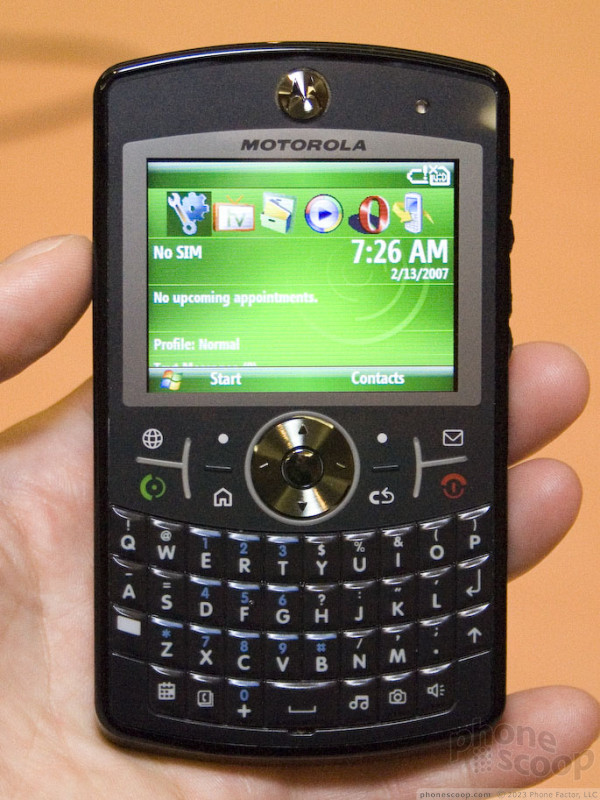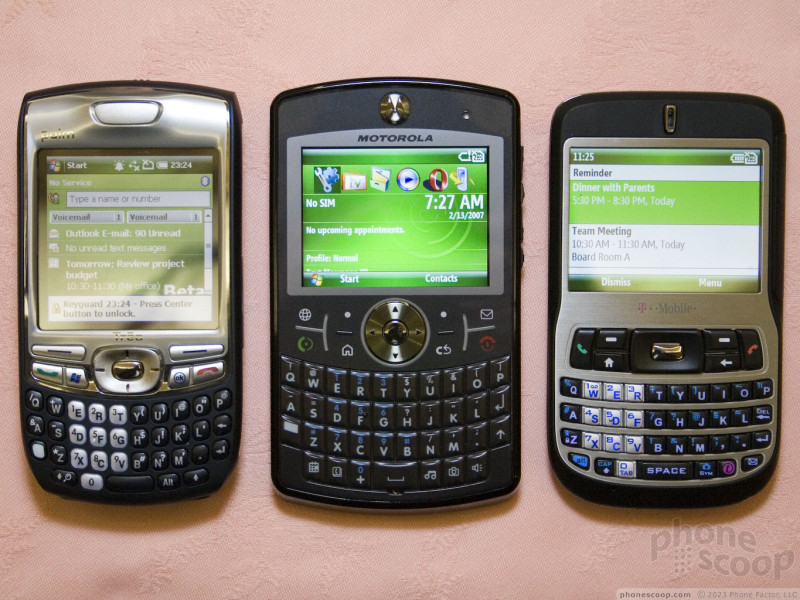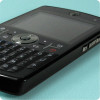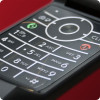3GSM 2007
Motorola made a dizzying number of announcements here at 3GSM this year, although the only new phone clearly headed for US shores is the awkwardly-named "MOTOQ q9".
Since it is so awkwardly named, we're just going to call it the "Q9", Motorola brand police(TM) be damned. Since we are talking about the successor to the original Q, (the Q1, if you will,) Q2 would have probably been the most sensible name. Perhaps Motorola thought it would be too freaky to say "the Q2 is coming in Q2."
The Q9 is a noticeable improvement on the original Q in almost every way. The original Q had an odd size ratio that was unusually long, and it's size/weight ratio made it feel slightly cheap. The new Q9 suffers from neither issue, with a size, shape, and weight that feels perfectly balanced and solid.
The keyboard is the biggest single improvement. The new keys are simply fantastic. One nice thing about the original Q was how the extended bottom section gave you plenty to hold on to while typing with your thumbs. When you first see the Q9, you might think the buttons are too close to the bottom to type while keeping the phone comfortably balanced, but in fact the way the bottom edge is beveled out makes it surprisingly easy to hold and type.
The Q9 is the second in Motorola's "SCPL" series. (The first was the ultra-basic MOTOFONE.) Although Motorola has been hyping SCPL for over a year as the next big thing after RAZR, it turns out that SCPL is really just a "design language". The bright chrome raised d-pad seems to be part of it, as are the way the top and bottom are rounded and beveled.
Moving to the innards, the memory has also been boosted. In fact, the Q9 has industry-leading memory specs for a mainstream Windows Mobile device: 256 MB flash memory for storage (expandable via microSD) and a whopping 96 MB of RAM for running many applications at once (64 is standard).
The Q9 will compete against an increasingly crowded market of Windows Mobile smartphones with QWERTY keyboards. In size, the Q9 is competitive with the rest of the pack, although it doesn't lead the pack the way the original Q did when it was announced. The Samsung BlackJack may be the Q9's closest rival. Although the BlackJack is smaller, the far roomier keyboard and display of the Q9 may make up for the size difference for most people.
There will be three versions of the Q9 coming out over the next several months. All have quad-band GSM and EDGE. The difference is in the 3G (WCDMA + HSDPA) bands they support. Naturally, one version will do 2100 for Europe. For North America, there will be a 850/1900 version - presumably for Cingular - and a 1700 version, presumably for T-Mobile USA. That last version is the most interesting, because it's the first device to be announced that supports the new 1700 / AWS spectrum that T-Mobile just won in an FCC auction. Motorola hopes to have the European version and at least one of the US versions launched by mid-year.
The rest of spec sheet is mostly what you'd expect these days: stereo Bluetooth, microSD memory card slot, and a 2 megapixel cameras with 30 FPS video capture. One welcome spec is the inclusion of the speedy HSDPA 3.6 standard (as opposed to 1.8.)
















 Video Tour: Motorola Q9h
Video Tour: Motorola Q9h
 Moto Q9h Video Preview
Moto Q9h Video Preview
 CTIA 2007
CTIA 2007
 Helio's Mysto A Mystery No More
Helio's Mysto A Mystery No More
 Motorola Q9H for AT&T Sighted
Motorola Q9H for AT&T Sighted
 Nokia E65
Nokia E65
 Nokia E61i
Nokia E61i







